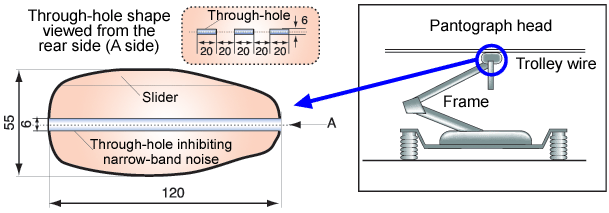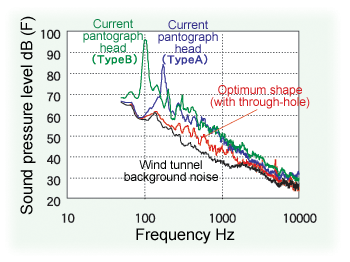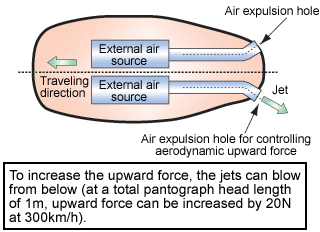| 4. Technique for Reducing Aerodynamic Noise from Pantograph Heads | ||||
|
Promoting the efficient development of a low-noise pantograph requires the introduction of a method to analytically determine the shape of the pantograph head. A design method was therefore proposed in which a fluid simulation and an optimization technique are combined to analytically derive a cross-sectional pantograph head shape that can simultaneously achieve aerodynamic noise reduction and stable lift characteristics. Fig.1 shows an example in which the shape is optimized so that the range of pantograph head lift variations is minimized in relation to changes in the angle of attack and the slider shape (due to new products, wear etc). Fig.2 shows the aerodynamic noise characteristics investigated in a wind tunnel test. A substantial reduction in aerodynamic noise of 5-10dB was achieved, while retaining an aerodynamic upward force stability equivalent to that of the current pantograph. A method using expulsive air jets on the surface of the pantograph head was also examined as a means of controlling the aerodynamic upward force more actively. It was verified that a control force could be secured equivalent to about half the static upward force of a pantograph at 300km/h (Fig.3).  Fig.1 Example of the pantograph head shape determined by the optimization technique (through-hole for inhibiting narrow-band noise added)
|

